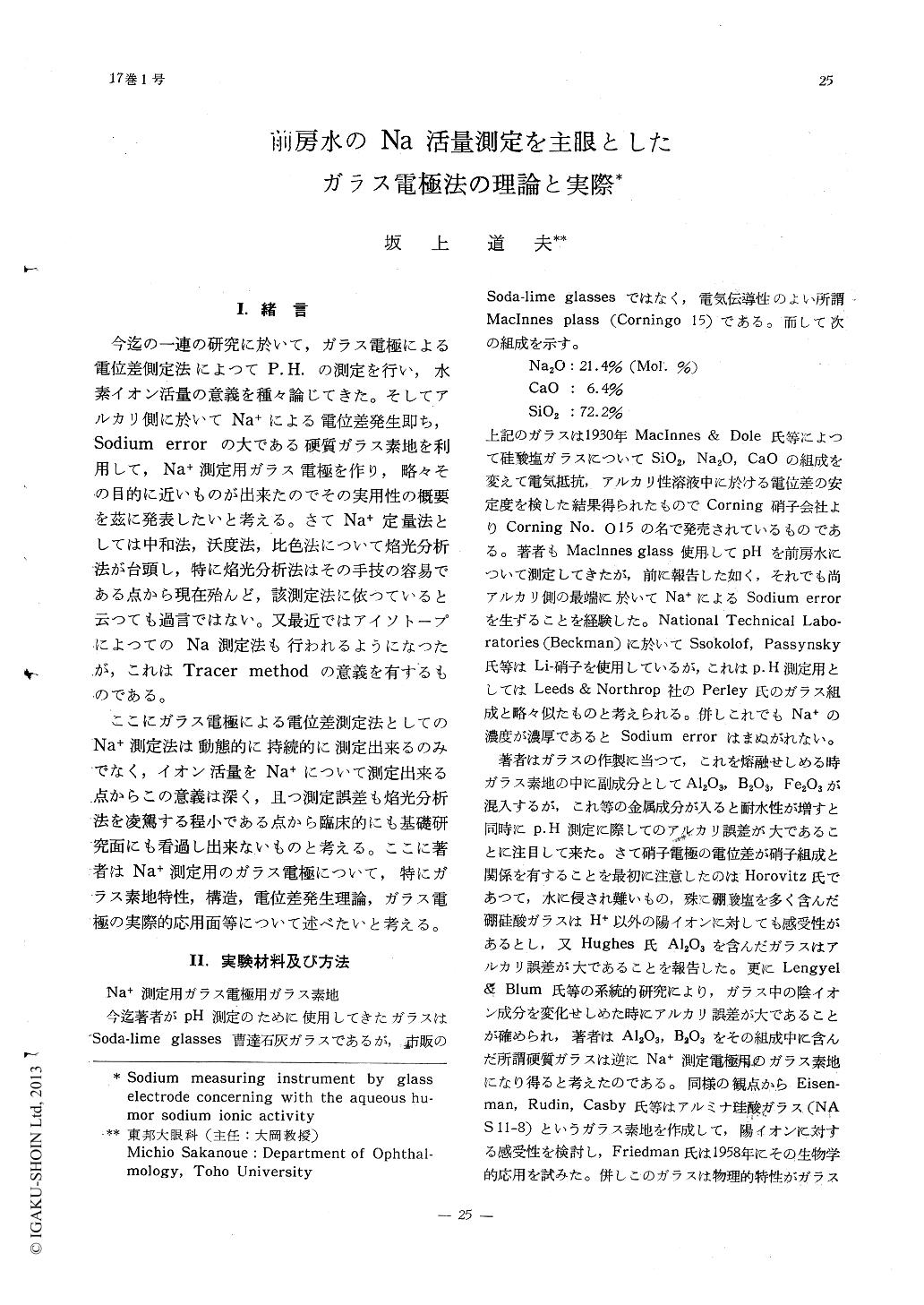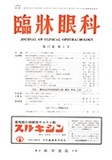Japanese
English
- 有料閲覧
- Abstract 文献概要
- 1ページ目 Look Inside
I.緒言
今迄の一連の研究に於いて,ガラス電極による電位差側定法によつてP.H.の測定を行い,水素イオン活量の意義を種々論じてきた。そしてアルカリ側に於いてNa+による電位差発生即ち,Sodium errorの大である硬質ガラス素地を利用して,Na+測定用ガラス電極を作り,略々その目的に近いものが出来たのでその実用性の概要を茲に発表したいと考える。さてNa+定量法としては中和法,沃度法,比色法について焔光分析法が台頭し,特に焔光分析法はその手技の容易である点から現在殆んど,該測定法に依つていると云つても過言ではない。又最近ではアイソトープによってのNa測定法も行われるようになつたが,これはTracer methodの意義を有するものである。
ここにガラス電極による電位差測定法としてのNa+測定法は動態的に持続的に測定出来るのみでなく,イオン活量をNa+について測定出来る点からこの意義は深く,且つ測定誤差も焔光分析法を凌駕する程小である点から臨床的にも基礎研究面にも看過し出来ないものと考える。ここに著者はNa+測定用のガラス電極について,特にガラス素地特性,構造,電位差発生理論,ガラス電極の実際的応用面等について述べたいと考える。
It in an obvious fact that in the measurement of H+ activity by means of glass electrode potential difference due to Na+ or Na+ error springs in the alkali side. It may be considered therefore that glass whase Na+ error is large can be conversely useful in the measu-rement of Na+ activity as Na+ sensitivity glass, depending on its combination. On such an idea as this, Eisenman made NAS glass and in 1958 Friedman attempted its biological application for the first time in the world.

Copyright © 1963, Igaku-Shoin Ltd. All rights reserved.


